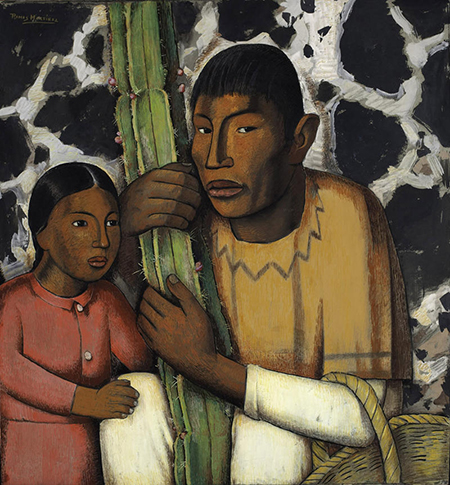
Continuing through April 20, 2014
This is the first major exhibition of Alfredo Ramos Martínez' work made while living in California between 1929 and 1946, and it's simply a dazzling display of artistic virtuosity. Born in Mexico in 1871, Martinez is considered by some to be the “Father of Mexican Modernism.” As a boy he was recognized for his artistic talents, and won a scholarship to the Academy of Fine Arts in Mexico City. Later, during a decade in Europe, he learned European academic tradition as well as the art of post-Impressionism. Back in Mexico, he helped found and direct the Open Air Schools of Painting. In 1929 he moved to Los Angeles, partly due to the need for milder climate for his sickly young daughter. Here he produced the remarkable body of work that is represented in this show, under the theme of looking back to the peasants of his native land. His drawings, paintings, and murals depict Mexican women and men with a somber dignity, sometimes even serenity. There’s a monumental quality in their grave countenance and in the stolid mass of their torso.
With a strong romantic impulse, Martinez looked back to a simpler era. In “El Lago” small groupings of men in sombreros ride to and from a town by a lake surrounded by gentle hills bathed in golden light – some of the land is furrowed, indicating that it is being farmed. In the far distance are blue peaks. It’s an idyllic scene, a kind of Eden that such contemporaries as Diego Rivera also enjoyed depicting. Like Rivera, Martinez depicts women bearing flowers, symbolically reflecting their own beauty and fertility. There was the other side, too, of struggle and defiance by the poor and dispossessed – such as the defiant figure with his fist raised in “El Defensor” - that was done directly on the front page of a Los Angeles Times.
Published courtesy of ArtSceneCal ©2014
